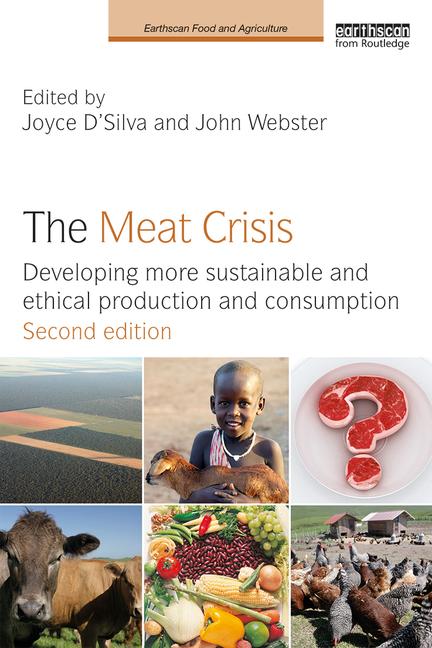The challenge of stormwater
Meat, poultry, seafood and prepared foods processors are increasingly faced with the growing challenge of protecting water resources, regardless of rural or urban locations. While water conservation and wastewater pretreatment have been the primary drivers, managing stormwater is more and more a key component of any water resource management strategy. Processors can take charge of stormwater similar to any other regulatory requirement; however, understanding how the broader aspects of municipal, construction and industrial stormwater management are evolving is valuable prior to revisiting or drafting stormwater pollution prevention plans (SWP3).
Great insight is gained from the 2008 National Research Council (NRC) study titled, “Urban Stormwater Management in the United States,” completed at the request of the U.S. Environmental Protection Agency (EPA). The book (available online or for purchase as a hard copy) tackles municipal, industrial and construction discharges, and relays what processors already know stormwater volumes and quality are degrading urban stream systems. The authors also note that the National Pollutant Discharge Elimination System (NPDES) permit program used to regulate point source, direct discharges into waters of the United States (Clean Water Act regulatory framework) is ill-suited for addressing the more complex stormwater discharge.
The National Acadmies Press Web site says the book instead “calls for an entirely new permitting structure that would put authority and accountability for stormwater discharges at the municipal level.” Many actions typically associated with Low-Impact Development (LID) or sustainable stormwater management, “such as conserving natural areas, reducing hard surface cover (e.g., roads and parking lots), and retrofitting urban areas with features that hold and treat stormwater, are recommended,” the site says. Stormwater control measures (SCMs, or more commonly called BMPs or best management practices) are discussed, although the authors assert that often the relationship between improved in-stream quality and different levels of stormwater pollution prevention plan implementation is not clear.
This will sound all too familiar to many processors, especially given EPA initiatives such as watershed planning, total maximum daily loadings (TMDLs), and Section 319 planning and grants. While states typically control the general permits for industrial stormwater activities, discussion continues regarding the need or benefit of individual permits. Some unincorporated areas in counties are developing ordinances and protocols as part of a broader stormwater program with fees.
How should a cost-conscious processor, focused on sustaining and growing business, demonstrate environmental stewardship of water resources that includes stormwater?
For processing facilities in rural areas, water quality tends to be a greater concern relative to water quantity because these facilities often have sufficient stormwater holding capacity. Facilities in urbanized areas struggle with stormwater quality and particularly quantity discharged, because land limitations typically preclude on-site retention. However, in a growing number of medium-to-large municipal urban areas, water quantity for all sites is an issue. Many localities are considering or implementing stormwater permitting that sets fees based upon treated stormwater volumes discharged in the municipal separate storm sewer system MS4 or off-site. Untreated stormwater discharges into the MS4 are not allowed. The processor thus has an incentive to minimize stormwater runoff, control peak discharges and minimize pollutant exposure to stormwater.
Before making any decisions regarding BMPs or structural improvements requiring capital, processors should review existing stormwater pollution prevention plans or consider developing one as part of a broader environmental stewardship or sustainability initiative. In both cases, the goal is to ensure that monitoring requirements are up-to-date and that BMPs are working.
The obvious challenge, as noted by the NRC, is knowing which BMPs should be considered and then determining if these are indeed working. In Georgia, a major change in the most recent NPDES general permit for stormwater associated with industrial activity addresses discharges into an impaired stream segment(s) as called out on the Georgia 303(d) list. These facilities have special requirements if a) located within one linear mile of an impaired stream segment; b) its stormwater flows to that stream segment; and c) the issue or substance that caused the impairment exists at the facility. Special requirements include additional sampling for pollutants of concern. Pollutant benchmark values, based on established in-stream water quality criterion, are used to determine if BMPs called out in the facility SWP3 are effective in minimizing pollutant concentrations in the stormwater discharge. While exceeding the benchmark value does not of itself indicate a violation of in-stream water quality standards, it may be used in conjunction with other information to demonstrate a violation.
For Georgia meat processors, the impairment is typically fecal coliform or dissolved oxygen, and the applicable benchmark is total suspended solids (100-mg as TSS per liter). The benchmark value for animal processors was derived by looking at the correlation between fecal coliform levels and total suspended solids using data taken from 30 different poultry-processing facilities. Results place facilities into one of four areas as depicted in Table 1: Low TSS/Low FC, Low TSS/High FC, High TSS/Low FC, or High TSS/High FC.
A list of BMPs designed to reduce fecal coliform levels in stormwater runoff has been developed for animal-processing plants that may be potential sources of fecal coliform. Other facilities may find this list to be useful as well for other pollutants of concern. Regardless of location, facilities should:
- Develop cleaning strategies (e.g., dry sweep or washdown) that prevent pollutants from being tracked out of containment areas;
- Ensure containment areas and other exposed high-traffic areas that tend to gather pollutants are specifically cleaned in advance of predicted storms;
- Be more aggressive during typical summers with afternoon thunderstorms – more frequent washdowns may be needed;
- Keep trenches around containment areas and high-traffic areas associated with transfer trucks clean and sanitized;
- Keep grassy areas well maintained to take advantage of sunlight it kills fecal coliform.
Similarly, best practices to manage TSS can be grouped by one of six actions: cover, contain, control, capture, protect and remove. Facilities should also assess operational BMPs contained in their SWP3 to ensure the following actions are taken where TSS and FC may occur:
- Cover: Material and key areas;
- Contain: Feathers, manure, chickens, feral animals; red water drainage, feed, offal/SPN;
- Control: Sheet flow toward vegetation/pervious areas; Gutter downspout outflows; diffuse water outflow to ensure sheet flow conditions; Slopes, especially those greater than 15 percent; Conveyance systems to ensure these remain erosion-resistant;
- Capture: Rooftop rainfall where downspout flows directly move toward “hot spots”; Containment/hot zone waters, debris, sediment; “First flush” before the storm;
- Protect: Maximize vegetation leading to outfalls, but ensure these areas are maintained; Shrubs and trees to disperse channel flows and help sheet flow; Grates and conveyance openings; Gravel/paved interfaces for sheet flow;
- Remove: Litter from truck ingress/egress; Biofilm or algae build-ups; Debris, sediment captured in conveyance systems.
Ideally, facilities will have TSS levels below 100 mg/L and acceptable fecal counts. These locations provide the best BMP knowledge for transfer. The facilities with high fecal counts and high TSS levels will benefit from that technology transfer. The big challenge in BMP selection is for those facilities that have low TSS levels and high fecal counts. Conversely, while high TSS with low fecal is problematic for the overall data correlation, it is most likely tied to construction sediment-type runoff.
In all cases, any data that demonstrates the relationship between improved in-stream quality and stormwater pollution prevention plan implementation will favorably serve processors as the broader aspects of municipal, construction and industrial stormwater and water resource management evolve.
John Pierson is a principal research engineer and head of the Food Safety, Environment, and Energy Technology group in the Georgia Tech Research Institute’s Food Processing Technology Division. For more information, contact him at (404) 407-8839 or John.Pierson@gtri.gatech.edu, or head to http://gtri.gatech.edu on the Web.
Looking for a reprint of this article?
From high-res PDFs to custom plaques, order your copy today!







